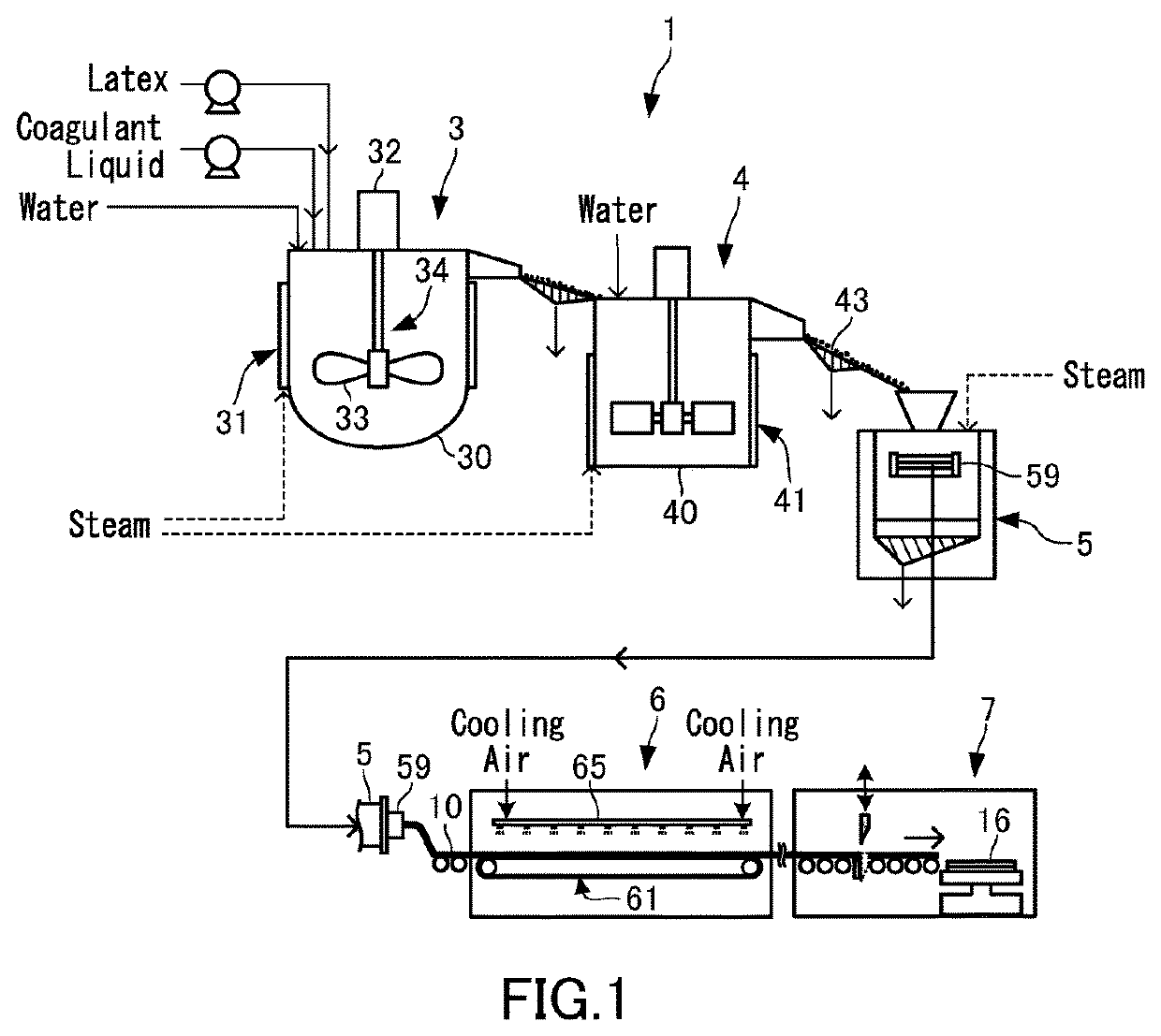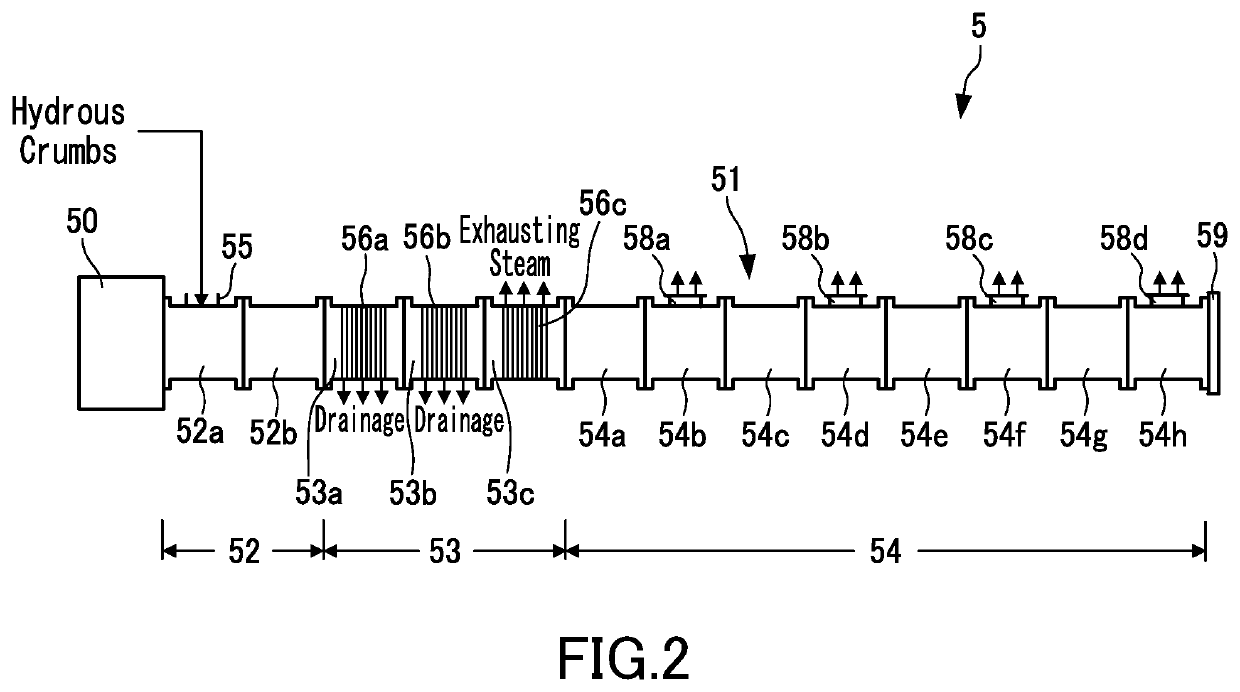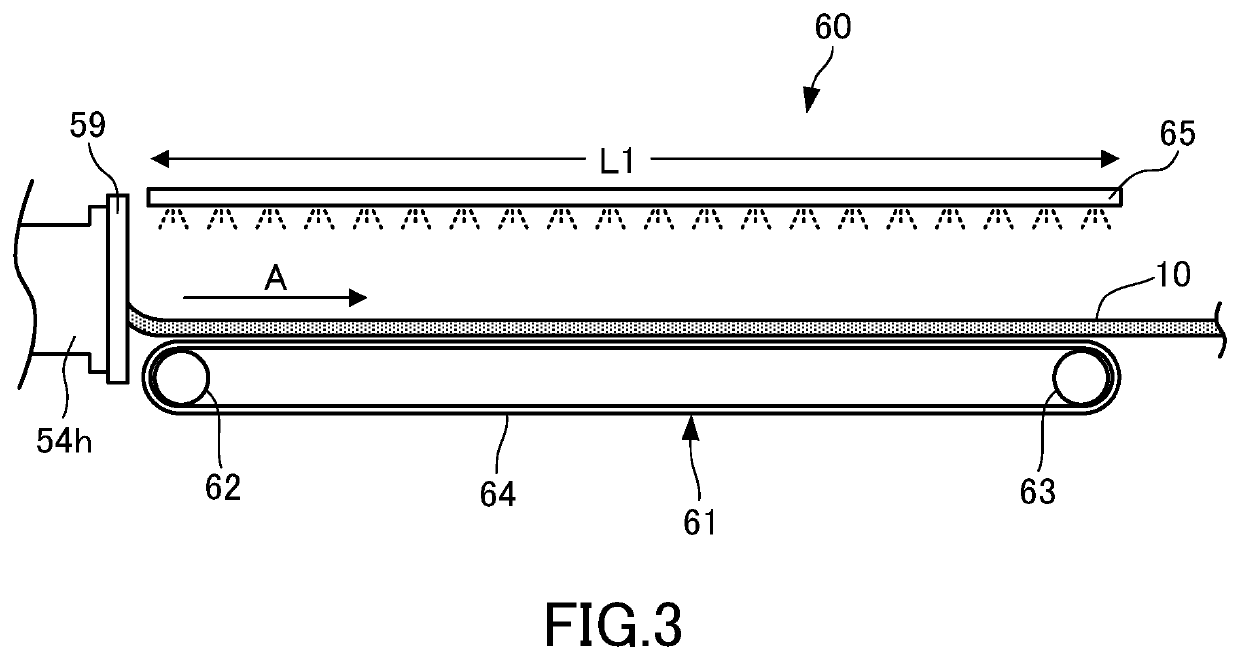Acrylic rubber bale excellent in storage stability and processability
- Summary
- Abstract
- Description
- Claims
- Application Information
AI Technical Summary
Benefits of technology
Problems solved by technology
Method used
Image
Examples
example 1
[0348]46 parts of pure water, 74.5 parts of ethyl acrylate, 17 parts of n-butyl acrylate, 7 parts of methoxyethyl acrylate, and 1.5 parts of mono-n-butyl fumarate, and 1.8 parts of octyloxydioxyethylene phosphate sodium salt as an emulsifier were mixed in a mixing container provided with a homomixer, and stirred, thereby to obtain a monomer emulsion.
[0349]Subsequently, 170 parts of pure water and 3 parts of the monomer emulsion obtained as mentioned above were put into a polymerization reaction tank provided with a thermometer and a stirring device, and cooled to 12° C. under a nitrogen stream. Subsequently, the rest of the monomer emulsion, 0.00033 part of ferrous sulfate, 0.264 part of sodium ascorbate, and 0.22 part of potassium persulfate were continuously dropped into the polymerization reaction tank over 3 hours. Thereafter, the reaction was continued while maintaining the temperature in the polymerization reaction tank at 23° C., and upon the confirmation that the polymerizat...
example 2
[0380]An acrylic rubber bale (B) was obtained in the same manner as in Example 1 except that the monomer component was changed to 4.5 parts of ethyl acrylate, 64.5 parts of n-butyl acrylate, 29.5 parts of methoxyethyl acrylate, and 1.5 parts of mono-n-butyl fumarate, and the emulsifier was changed to nonylphenyloxyhexaoxyethylene phosphate sodium salt, and each property was evaluated. The results are shown in Table 2.
example 3
[0381]An acrylic rubber bale (C) was obtained in the same manner as in Example 1 except that the monomer component was changed to 48.25 parts of ethyl acrylate, 50 parts of n-butyl acrylate, and 1.75 parts of mono-n-butyl fumarate, and the emulsifier was changed to tridecyloxyhexaoxyethylene phosphate sodium salt, and each property (Compounding Agent was changed to “Composition 2”) was evaluated. The results are shown in Table 2.
PUM
| Property | Measurement | Unit |
|---|---|---|
| Temperature | aaaaa | aaaaa |
| Temperature | aaaaa | aaaaa |
| Temperature | aaaaa | aaaaa |
Abstract
Description
Claims
Application Information
 Login to view more
Login to view more - R&D Engineer
- R&D Manager
- IP Professional
- Industry Leading Data Capabilities
- Powerful AI technology
- Patent DNA Extraction
Browse by: Latest US Patents, China's latest patents, Technical Efficacy Thesaurus, Application Domain, Technology Topic.
© 2024 PatSnap. All rights reserved.Legal|Privacy policy|Modern Slavery Act Transparency Statement|Sitemap



